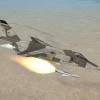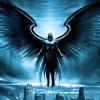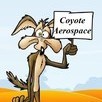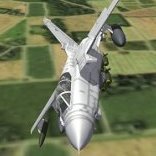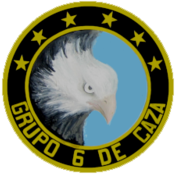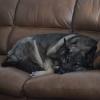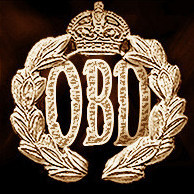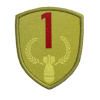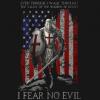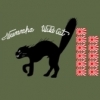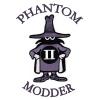Leaderboard
Popular Content
Showing most liked content on 04/18/2021 in all areas
-
14 points
-
13 pointsMail-Bomber You learn something knew every day - the pod has only 1 door, but can be carried on both pylons by simply turning it around to always get the door outboard. Maybe anyone has infos about the CNU-264/A Cargopod's weight? Unfortunately I didn't find anything so far...
-
9 points
-
7 pointsJastrzębie (Hawks) . We used to have problem with Vipers in Poland cause name 'Sokol' (Falcon) was occupied by helicopter PZL W-3 .
-
7 points
-
7 points
-
7 points
-
7 points
-
7 points"Old, not obsolete" PS: Right after this picture was taken, i couldn't catch up (as i would have been able to, easily, with a Crusader or a Phantom) with a couple of MiG-17s that proceeded to do target practice with the A-4s i was meant to be escorting. So it turns out it was obsolescent, at least
-
6 points
-
6 points
-
6 points
-
5 points
-
5 points
-
5 points
-
5 points
-
5 pointsPolish Heavy Metal...... Love the sunrise takeoffs................... Now id I can get in and out before those beastly Americans show up and spoil everything...........
-
4 points
-
4 points
-
2 points
-
1 point
Version 1.0.0
915 downloads
Hi! Special thanks to Florian who did the first mod of su-25 for SF2. All data files been taken from there. Also credits goes to Stary and Comrade. While making this mode, i used some files made by them. This model comes from a freeware source, and is used in several other games. Only some small details like drag chute, animation etc are done by me. And thanks to Thirdwire for this sim. THIS IS A FREEWARE. COMMERCIAL USE IS NOT ALLOWED! Enjoy! -
1 point
-
1 pointI know OBD is a small team with some talented modders and researchers helping out and the current list of aircraft is extensive and unparalleled in comparison with any WW1 flight sim I'm familiar with. But, are there any future plans to create new aircraft? is there anyone that models aircraft in the team at present? I'm thinking of the Farman short or long horn and Avro 504 for training and the Sopwith Dolphin and Fokker D8 for late war. A Morane Bullet with deflector plates would also be a nice addition along with the Bristol M.1 for some monoplane love. Oh, and maybe a Handley Page .... Macchi flying boat fighters on the Italian front can wait along with the Hanriot.. Of course I'm extremely happy with the current list and the game itself. Just putting it out there ....
-
1 point
-
1 pointNice video of the Stow Maries Fly In... would be great to visit and see the aircraft and museum etc.
-
1 pointYes guys as we said already we do have plans to make more aircraft for WOFF. Now we have an all round sim we can concentrate again on even more (!) content. We'd love to do those mentioned and a few others I personally would like to see (now there's a good chunk of our lives gone assigned to doing all that already ;) ) We did have a Bristol M.I but it was never actually used at the front. The Fokker D.8 is in there as the Fokker E.V. (which was renamed because of fatal accidents due to wing failures). The D8 versions were very late getting to the front - late October 1918 so not many were used before the end - but as I say you can fly the earlier version anyway which was pretty much the same (apart from improved workmanship!).
-
1 pointGlad it's sorted anyway trotski00 Of course as I already said we can add more - it just takes TIME. Yes we have already intended to add the few aircraft that are not yet available in the squads. Don't forget WE added the information in the squad to show you that a particular aircraft is not available. We added the manager code to read the squads and display messages ;) so we know. One day all being well with enough support to keep us going maybe it will be even bigger than the 10 million items in there. Most sims do not have even a fraction of the detailed WW1 content as it is. We have been doing this a long time, and we know what aircraft are not in there, we want to add more for BH&H II. We do not have a visual "pilot" avatar so nowhere to pin wings on. Do you mean you want to see a screen with a picture of wings ? Or message a "Congrats you have be awarded your wings!" Just because it's essential to you doesn't mean it's essential to everyone of course.
-
1 point
-
1 point
-
1 pointThat's an old file with an old link. I've updated the links to the file and within the download you got it from.
-
1 pointThank you for the feedback. At once I release the first version of SF2 new Menu / GUI mod, I am considering adding more different themes / styles for different era / theater.
-
1 point
-
1 point
-
1 pointJust completed the Howitzer it will be a low ploy model as having a full set of models as a set need to be low otherwise the game will run slow (thanks to swambast for the information)
-
1 pointAs mentioned in another topic, I've been mulling over doing a Block III version of the Super Hornet, just to keep up with what's been going on. Right now I don't have a timeline (just been thinking about it) given that the Block III is still a work in progress in itself. The main issue has been the conformal fuel tanks that the Block III will supposedly have. So far the US Navy has been having issues with it and may axe them. I'll keep Googling it to catch any news often on but I want to wait until a final decision is made. If they go with it then there will be a new model (hopefully FastCargo can do it, or somebody else with the source models can do it) as well as a new cockpit for it. Again this is all a matter of conjecture right now as said, there isn't enough information around to make a final decision yet. The other issue will be the fuel tanks, but if FC can work on it we'll see what we can do.
-
1 point
-
1 point
-
1 point
-
1 pointHi all, We have released a new patch V1.02 for WOFF BH&H II. WOFF BH&H II CHANGE LOG: Version 1.02 14 April 2021 1) Log books should now display the training flights correctly. 2) Varied the range of tree sizes. 3) Fixed a Winter Grassland MOS issue. 4) Increased the volume of player bullet hit sounds and reduced the external volume. 5) Time advance flight simulation 'casualties' should now be accounted for correctly. 6) Fixed some duplicate airfields and some missing airfields in global layers: - 1914; 1918; 1918+4; 1918+9; 1918+11. 7) New Feature: Implemented cockpit shake when guns are firing. 8) Fixed an issue with Auto Enlistment that would sometimes terminate in a blank screen. 9) Fixed an issue that would sometimes render a 'pilot in training' already set to autopilot at mission start, in Quick Combat and Quick Scenario. 10) Fixed an issue that prevented mission replay from working on non-English OS's. 11) Aircraft model fixes ; - Albatros D.I extra rigging wire removed from cockpit view. - BE2c variants small visual issue with rigging fixed. - SPAD XIII, removed vibration from Altimeter, improved filler cap in cockpit view, other minor fixes. Please see the WOFF BH&H II downloads section on our website.
-
1 point
-
1 pointIAI F-19A 'Nesher' - 65th Aggressor Squadron, USAFE, RAF Alconbury 1982
-
1 point
-
1 pointAhh that old familiar tale you say - of course, in the late 1960s the F-4 Phantom II finally had a gun installed, which meant that everything was better, magical unicorns danced around the sky and the Vietnamese MiGs would fall from the sky in droves! Okay so that didn’t quite happen….......what did? Note - These articles are a compacted summary of a rather massive topic and will discuss the F-4 and Guns in Vietnam mostly ignoring missiles. Vietnam will be used instead of SEA. And USN includes the US Marines for simplicity. Very different F-4s and Air Forces (USAF v USN) Firstly, with different equipment, ideas and ways of doing things the United States pretty much had different Air Forces in the US Navy (USN) and the US Air Force (USAF), so it is important to draw a big red line between them with a quick summary: US Navy F-4 Versions in Vietnam F-4B (F4H-1) – Second F-4 version but first major production version of the F-4. F-4J - Improved F-4B Major Differences compared to the USAF Air to Air Refueling with Drogue and Basket Use of AIM-9B/D/G/H versions of Sidewinder only as Short Range Missile. Never fitted Guns, and only rare use of the MK4 gun pod (mostly Air to Ground use). Internal ECM equipment. Different Radars (AN/APQ-72, -59 & AWG-10 Pulse Doppler) Had no flight controls in the back seat In 1972 preferred used of AIM-9G/H Sidewinder over AIM-7E-2 Sparrow Used more flexible Loose Deuce A-A formation tactics Carrier and land based (Marines) USN F-4J refueling drogue and chute style (USN) USAF F-4 Versions in Vietnam F-4C (F-110A) – Based on the F-4B with USAF changes. F-4D – Improved F-4C. F-4E – This is the (only) F-4 with the internal Gun. Major Differences compared to the US Navy Air to Air Refueling with Boom Used AIM-9B/E/J versions of Sidewinder Used AIM-4D Falcon for periods over the AIM-9 on F-4D/E External Podded ECM equipment Different Radars (AN/APQ-100, -109 & -120 ) Use of Gun Pods (SUU-16 & SUU-23) Had some flight controls in the back seat In 1972 preferred use of AIM-7E-2 Sparrow over AIM-9 / AIM-4 Insisted on sticking to the obsolete / useless fluid four (Welded Wing) A-A formation tactics right to the end. USAF F-4 nears the boom of a KC-135 in 1967 (USAF) Why no gun on the F-4 to start with? On the 18th September 1947 the United States Army Air Force (USAAF) became the USAF and with the limited budget constraints after WWII, Strategic Air Command (SAC) was seen as security priority and was thus given the major funding over the Tactical Air Forces (TAF). SAC culture dominated the USAF in the early years along with its doctrine of strategic nuclear bombing with massive manned bombers. Tactical Fighters (F-100/F-101 etc) under this emphasis on SAC now had two roles: Defend against enemy bombers as interceptors. (Air Defence Command / ADC) Low level delivery of tactical Nukes. (Tactical Air Forces / TAF) Apparently, Korea never happened because by the late 1950s bombing a target in a fighter within 750ft was more then good enough (with a Nuclear weapon) so not only conventional Air to Air training went out the window but also conventional bombing! One Air Force general noted about this period, General (Curtiss) LeMay had deliberately loaded the Air Staff with bomber guys, who were not well acquainted with things like air superiority or air-to-air combat, and who wanted to destroy enemy aircraft on their airfields. In 1957, LeMay actually tried to eliminate the TAF, but the possibility of the Army developing its tactical air support arm overrode this idea, and later that year LeMay reluctantly gave the TAF more funds to keep its mission from being turned over to the Army. Who needs fighters anyway? - the B-36 Peacemaker takes its toddler son for a walk in 1948 (USAF) Some of this thinking was perhaps driving the US Navy with their F4 program in the 1950s. The USN had a requirement to intercept Soviet bombers attacking the fleet above 50,000ft out of the range of gun armed fighters and thus from 1956 the AIM-7 Sparrow III was to be the primary weapon with a gun as secondary. By 1957 however the gun was deleted from the design because the new AIM-9 Sidewinder was to be the secondary weapon. Feeling in the USAF really was in some respects that the day of the gun had past, working at the Pentagon in Air Force Operations as a colonel in the early 1960s, Maj Gen Richard Catledge recounted his Pentagon experience with the antigun sentiment and General Momyer: I realized this two-star, General “Spike” Momyer[,] ran the Air Staff—very strongminded individual, very knowledgeable individual, who did his homework on everything. . . . It was his belief and his concept that future airplanes would not have guns in them. There was no need for guns. I couldn’t believe this when I came across it in the Pentagon. So I built a flip chart briefing, with my convictions, why we needed guns, more for air-to-air than for air-to-ground. . . . Anyway, I found it was an uphill fight. That every colonel, every major, in requirements, whose business I was getting into, believed as their boss did. So I really went uphill. I built my chart, got my ducks all lined up, and went to my boss, [Major General] Jamie Gough, and gave him that briefing. He said, “Well, it’s a good story, . . . [but] you are going to have to run this by Spike Momyer, and I’m not going with you.” . . . So I went up, got the appointment, put my stand in front of his [Momyer’s] desk, and started in telling him why we needed guns in airplanes. Well at one point in this—he stopped me several times and gave me a few words on why we did not, and [that] essentially missiles had taken over. Missiles had taken over for air-to-air . . . and other kinds of munitions [had taken over] for air-to-ground, so there really was no need [for obsolete guns]. Well, I thought I had a pretty good argument, but didn’t convince him. I remember he’d beat on his table and say, “There will be a gun in the F-4 over my dead body.” That was his attitude. Seems strange that despite the many limitations of missiles then, such as they couldn't be used at the close ranges guns were used at, and they had no way to ID aircraft Beyond Visual Range makes it look at if Momyer was towing a party agenda for flashy new technology. [Even if the technology was crap] The USAF took on the F-4 as part of Defense Secretary Robert McNamara’s drive to get the services to use standard equipment with commonality. He was also interested in the conventional side of things and saw both the A-G potential as well as the A-A potential and thus the USAF received the F-4C (originally designated F-110A). (Note: yes this was potentially one of the few things McNamara did that wasn’t a complete catastrophe!) Of course, the F-4 wasn’t the only aircraft of its time without an internal gun (another reason seen given is that pilots would never have closed to gun range to take down a bomber carrying Nukes.) Some other Interceptors of the era born with no internal Gun: F-102 Delta Dagger F-106 Delta Dart (Some later got a gun under project Six Shooter from around 1969) Su-9/11 Fishpot Tu-128 Fiddler Su-15 Flagon MiG-25 Foxbat Some Interceptors that had the gun removed: Lightning Fmk3 CF-104 Starfighter (Early) A gun was later incorporated MiG-17PFU Fresco MiG-19PM Farmer MiG-21PF/PFL/PFS/PFM/FL (PFL and PFM used by the VPAF in Vietnam along with the gun armed F-13 and MF) F-102A Delta Dagger interceptors (USAF) Getting a gun on the F-4E McDonnell first proposed an internal gun for the F-4 in 1961 however it wasn’t until a potential limited war in Vietnam looked likely in 1963 that this was taken more seriously by the military for Ground Attack / strafing. By 1965 combat experience determined that a gun was a requirement and it was trialed in the F-4, and thus the F-4E was born with a nose job and new APQ-120 Radar: This shows the 22 modules (Line Replaceable Units / LRUs) required for the APQ-120 radar Adding the gun solved all the problems yes? The original gun muzzle caused a few problems. Firstly gas ingestion into the engine inlets caused engine flameouts and secondly it made a loud whistling noise that apparently notified the enemy troops (and their Dogs presumably ) long before the F-4 got there. The muzzle had to be redesigned and the later F-4Es have a longer gun muzzle under the nose. Also not shown in the diagram above, the gun assembly and ammo drum took up a lot of space in the nose and the dish/antenna size was reduced. The Westinghouse APQ-120 was an early ‘Solid State’ radar (derived from the APQ-109) and being Solid State must have helped in reducing the obvious vibration issue when you have a massive Gatling gun sitting next to 1960s electronics! Despite this it still exceeded the reliability requirements and was similar in that regards to the F-4D radar that had no gun in the nose. Ex F-4 flyer Walt BJ stated that the APQ-120 in the F-4E had about 20-25% less range over the APQ-109 in the F-4D. Didn’t the F-4E just wipe the floor now it had a gun? During Operation Linebacker I & II (1972/73): The USAF F-4E had 22 claims in 25 (known) engagements including 7 gun kills The USAF F-4D had 27 claims in 30 (known) engagements with no gun kills So firstly, if you add an internal gun but still don’t train anyone to use it then despite any figures nothing really changes. Secondly the missiles and radars had improved since 1965 regarding close in capability and so the Gun was starting to look very secondary by now. Considering the extra effort required for guns in skill, fuel, risk of collision, and making themselves more vulnerable, a missile would be the priority weapon regardless of the USAF training issues. What about the gun pods? Stop gap measures meant some squads using the 20mm SUU-16 and SUU-23 Gatling gun pods on the F-4C and D respectively – however despite some success these were somewhat inaccurate and the extra drag had a noticeable effect on range. Looking happy to be here - SUU-23 Gun pod on the center line station of an F-4 (Clive Camm) Some championed the Gun pod such as Korean war ace Col Frederik “Boots” Blesse after it became a useful strafing tool for South Vietnam sorties. USAF Col Robin Olds was a tad less enthusiastic: The gun pod wasn’t so much a speed penalty as an object of increased drag and fuel consumption. But that wasn’t my objection to the gun pod, I refused to carry it for 3 basic reasons; It took the place of five or six 750 lb bombs. Only my older and more experienced fighter pilots had ever been trained in aerial gunnery, to say nothing of air-to-air fighting. There were perhaps a dozen of them in the 8th TFW. I had no intention of giving any of my young pilots the temptation to go charging off to engage MiG-17s with a gun. They would have been eaten alive. Instead they fought MiGs the way I taught them and did so with notable success. The US Navy briefly trialed and used the 20mm MK4 (GAU-4) Gatling gun pod mostly for A-G but this was determined to be useless in operation with technical difficulties and also meant the preferred configuration of centre line drop tank only could not be carried. The not so successful MK4 (GAU-4) gun pod at China Lake (Dave Woolsey) Did the Navy not want an internal or any gun? For the primary purpose of fleet air defense, ‘missiles only’ it seems was deemed adequate. When in combat over Vietnam some Navy pilots wanted it and others didn’t. The gun pod was not persevered with and even an offer of free SUU-16/23 pods from the USAF was turned down on one occasion. We can deduce that if you reshaped the F-4J nose like the F-4E then you also have to reduce the radar dish size and forfeit range which might not be the best idea regarding fleet defense. Simply plonking in the APQ-120 with less range and no useful lookdown/shootdown capability was probably not going to win USN favour. Even spending the money on a modified APG-59/AWG-10 still gets you reduced range at the end of it. The APG-59/AWG-10 in the F-4J had some good lookdown techniques (for its time) and was considered superior. However even without the gun the F-4B/J Phantom avionics suffered from heavy carrier landings: I had a USN F4J pilot in my back seat one night gunship escort mission (can't for the life of me remember why) and he marvelled at the radar pickup. I asked him why he thought it was so good when he was flying the J model. He told me after about 4 'standard' carrier landings the radar wasn't so hot anymore. (Walt BJ) So, what did the Pilots say about Guns, Training, and Back Seat Drivers During the Vietnam conflict a Secret project (Red Baron) took place which compiled every A-A engagement fought. As part of that the aircrews were interviewed where available, giving quite a mixed view. 3 April 1965 F-4B USN front seat pilot (with 1000 hours) There is a need for a close in weapon as a backup on any mission……………….Guns would also be useful as an air-ground weapon (stopping a truck convoy, for example) 10 July 1965 USAF F-4C front seat pilot Gun not necessary; it will get people into trouble. Would like capability to fire all missiles on the F-4 with Centreline Tank on. Less minimum range for missiles instead of guns…….Because lack of ACT at time of event, did not know how to manoeuvre the F-4 as well as he could later after some experience. 6 Oct 1965 USN F-4B front seat pilot Fighter needs guns or short range missile……………..Turning and acceleration rate of MiG-17 was impressive. The MiG leader was aggressive and a good fighter pilot. 23 April 1966 USAF F-4C front seat pilot Improve the performance of the AAM and the gun will not be needed…………Training safety restrictions severely limited air-combat-tactics training prior to deployment to the combat area. 23 April 1966 USAF F-4C front seat pilot The need for a F-4 gun is overstated, although it would be of value if it could be obtained without hurting current radar and other system performance. If you are in a position to fire guns, you have made some mistake. Why after a mistake would a gun solve all problems. Also having a gun would require proficiency at firing, extra training etc. Have enough problems staying proficient in current systems. If the F-4 had guns, we would have lost a lot more, since once a gun dual starts the F-4 is at a disadvantage against the MiG. 23 April 1966 USAF F-4C front seat pilot Felt that he had very poor air-combat-tactics background. Prior background was bomber and other multi-engine. Transition to F-4 oriented toward upgrading a qualified fighter pilot rather than training a pilot with no fighter background. 25 April 1966 USAF F-4C back seat pilot Gun is not particularly desirable, if the performance of the aircraft is degraded by an external installation. Also, one might make the mistake of getting into a turning battle if a gun was available 25 April 1966 USAF F-4C back seat pilot Capability of the F-4 is being wasted by having a pilot in the back seat. The pilot is not adequately trained as a radar observer. Need a radar expert in the back seat. The pilot back seaters main goal is to be upgraded to the front seat rather than master the radar. 26 April 1966 USAF F-4C front pilot It is a fallacy to say that you can bring the F-4C home and land it solely from the back seat. You’ve got to blow the gear down and then there is no antiskid system; there is no drag chute handle; there is no fuel gauges or switches; you may be limited to using internal fuel; you can’t dump fuel or jettison tanks. A gun would be nice in an F-4C as long as it was clearly understood it was only a weapon of last resort. Soviet fighters are more capable than US aircraft inside gun range. 29 April 1966 USAF F-4C back seat pilot It was not necessary to have a pilot in the back seat of the F-4 except during night A-G missions when a pilot may more capably advise the aircraft commander. Actually, a radar officer would be more interested in the back-seat operation than a pilot would be. 29 April 1966 USAF F-4C front seat pilot It would be undesirable and possibly fatal for an F-4 to use a gun in fighting with a MiG because the MiG is built to fight with guns and the F-4 is not. 30 April 1966 USAF F-4C front seat pilot Training was not really adequate for this engagement, didn’t know what the back should do in a hassle such as this. 14 June 1966 USN front seat pilot Guns would be most useful for the ResCAP role but not particularly valuable in the air to air role. An F-4B from VF-111 Sundowners giving it some - just because (USN) The F-4 Phantom II Dogfighter? As we know the F-4 was not particularly the most agile fighter in theatre and turning at a slower speed was a bit of a problem. However, US fighters had seldom been the best turners in previous conflicts such as WWII (think F-6F Hellcat V Zero) ……power and speed could make up for it and were often better attributes to have. In 1966 the US Navy flew “Project Plan” flying the F-4B against a series of fighters to determine how good it was in an Air Superiority role. It concluded that contrary to what F-4 pilots thought the F-4 was the best air to air fighter in the world (including the F-8), if the F-4 stayed fast. To fly the F-4 however in BFM/ACM you needed to have training and a lot of experience (like most jets of this era). One particular characteristic of the hard-winged F-4 was “Adverse Yaw” at slower speeds where the pilot had to make the turn using rudder pedals instead of the stick. If the stick was used the chances of departing were very high – somewhat fatal in combat. Now stick a pilot in the cockpit with little training and you can see that in the heat of battle adverse yaw becomes quite serious (not just A-A but avoiding SAMs etc). Of course, pilots just simply avoided going anywhere near adverse yaw if they could however that meant they could never max perform the jet if they needed to in every situation. Adverse Yaw was all but eliminated by adding leading edge slats to the F-4E with the 556 "Rivet Haste" Mod late 1972. Too late to have any real relevance for Vietnam though. In Part 2 we look at the very different training aspects of the USN/USAF/VPAF, the F-105 / F-8 paradox and the myth / legend of Colonel Tomb.
-
1 pointThe AWG-10 evolved into a great radar but it fell far short of the brochure data as released with the F-4J. A slatted F-4S with the AWG-10B was an awesome machine only lacking a gun. But look at where the F-4E was at during the same time frame. The APQ-120 evolved in parallel with the AWG-10... digital improvements increased reliability and capability across the board. But look at what the F-4E gained in its multi-role ground attack capability as well as the frameless front canopy that was deployed in limited numbers. I would have been happy to be a pilot of either one, but I think I would have preferred the F-4E unless I specifically was tasked with fleet defense over water, in which case the F-4S/AWG-10 was just short of the F-14/AWG-9 capability. But the F-4E was better at dogfighting and far better at ground attack.
Important Information
By using this site, you agree to our Terms of Use, Privacy Policy, and We have placed cookies on your device to help make this website better. You can adjust your cookie settings, otherwise we'll assume you're okay to continue..


